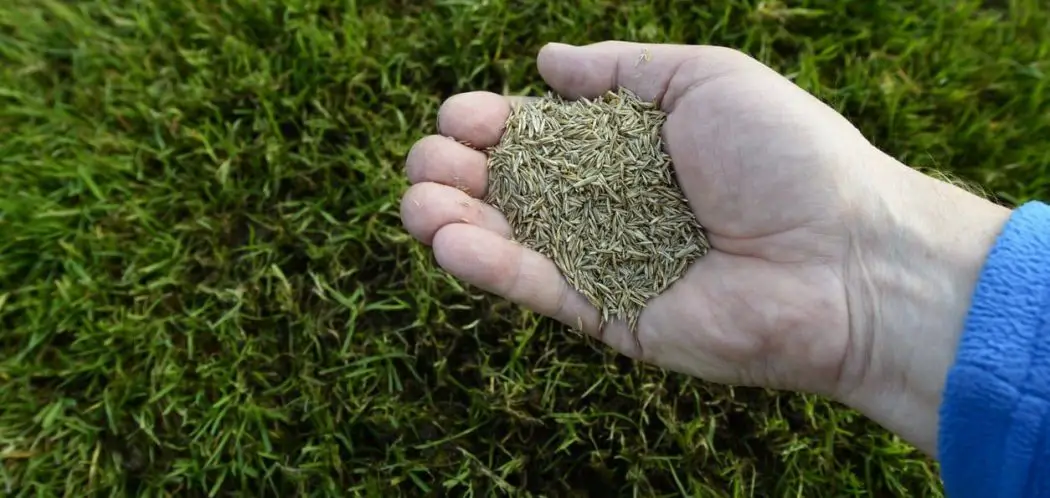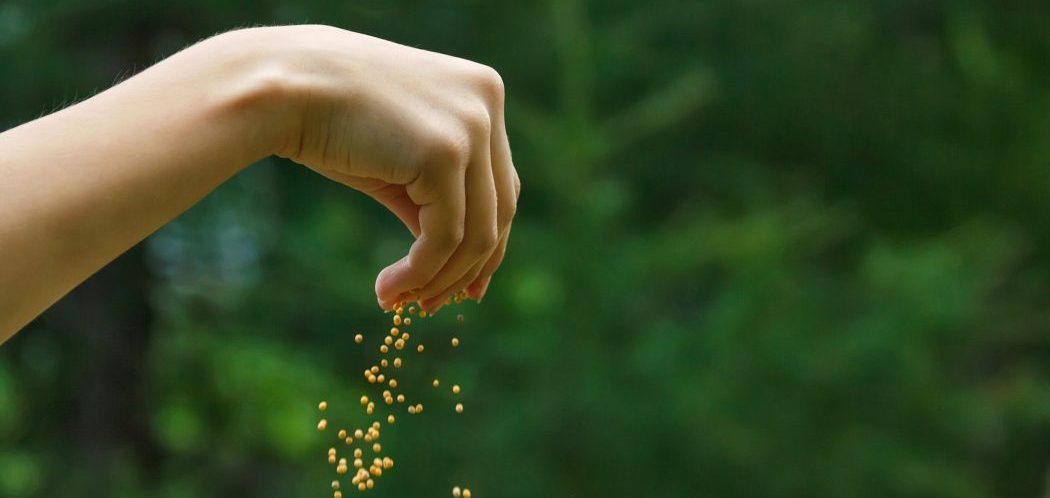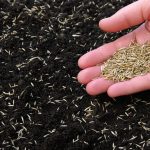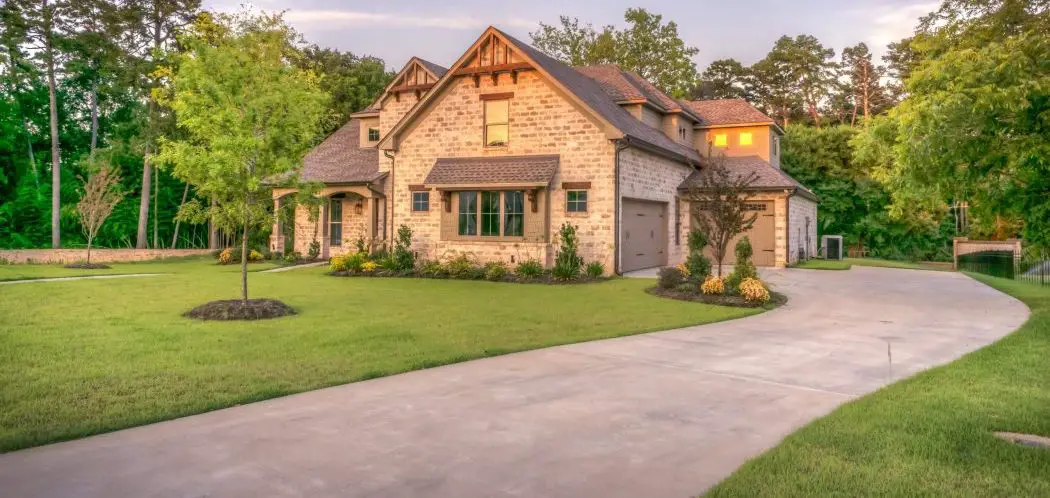Grass and lawn seeds are something that you might just take for granted, until you need to think about planting grass on your lawn. If you are wondering, “Where does grass seed come from?” know that there are actually several kinds of grass seeds, and they all come from different places. Depending on the climate of your region and the amount of sun that your yard gets, you will need to pick different kinds of grass seeds.
Where Does Grass Seed Come From?
Grass seeds come from grass plants. The grass that you plant on a lawn is able to produce seed under the right conditions, even though you will never see the grass on a well-maintained lawn grow seeds. This is because grass is often kept short on a lawn.

How Is Grass Seed Made?
Grass seeds come from grass itself. You might not know what this looks like when it is growing on grass.
When grass is regularly trimmed, it isn’t able to grow long enough to be able to produce seeds. Any seeds that it might be starting to produce will get cut off when you mow the lawn, and you will probably not be aware that it was there at all.
Every different type of grass produces seed to be able to keep growing. It’s just that when you have grass on a lawn, you maintain it so that it does not grow enough to be able to produce that seed. If you let your grass grow out to produce seed, chances are that you would not like the way that the tall grass looked on your lawn.
Where Is Grass Seed Made?
There are farms that produce grass seed. This is where commercial grass seed is made. If you are buying grass seed from the store, it is likely that it was produced on a large farm.
However, anyone can make grass seed. If you have grass on your lawn, you would technically be able to make grass seed yourself. You probably would not want to do this, as you would have to grow out the grass on your lawn past the point that it would look nice.
What Part of Grass Is the Seed?
To be able to see the part of grass that produces the seeds, you will need to allow your grass some time to be able to grow long enough that it can develop the seeds. The amount of time that you need to grow your grass out depends on various factors such as the kind of grass and the weather, but in general, it takes about 20 to 30 days for grass to show its seeds.
Once grass has been allowed to grow tall enough to produce seeds, you will start to see that it has little tufts or tails at the ends. This is where the grass forms its seeds. The seeds will grow on the tip of the grass, and would fall off naturally or be carried by birds or animals for more grass to grow in that area.
How Do You Get Seeds From Grass?
Harvesting seeds from grass is very easy to do. First, you have to wait a while for the grass seeds to be ready to harvest. It will take a while for the grass to grow long enough that it is able to start to produce seed pods, and will take even longer for the seeds to be ready to come off the grass.
In general, it takes about 20 to 30 days for the grass to grow tall and to start producing seeds. Once you notice that the grass is starting to produce seeds, you will have to keep waiting until those seeds are ready to be harvested.
To check to see if the seeds are ready to be harvested yet, you will need to take one of the seed pods off of the grass. Don’t worry about wasting a seed pod if they are not yet done. Chances are that there are plenty more seed pods on the rest of your grass, and removing one before it is ready should not harm the amount of seed when you harvest more of the grass.
When you have a seed pod, hit it against your palm. If some seeds fall out, then the seeds are ready to be harvested, and you can remove the other seeds from other pods in the grass. If seeds do not fall out, then they are not ready to be harvested and you should check the seeds again in a few days.

Common Grass Types in the US
St. Augustine Grass
St. Augustine is a type of grass that has thick dark green blades. This grass grows very thickly, and tends to not get weeds easily because it is so thick. As far as lawn grasses go, St. Augustine grass is a medium to high maintenance grass type.
It does best in warm climates, including tropical regions. St. Augustine grass grows very well in places such as the southeastern United States. It also grows in other countries, including Mexico, Australia, and South Africa.
St. Augustine grass originates in Central America, as well as central and southeastern regions of North America. Today, it is popularly used in coastal and tropical regions as a versatile lawn grass.
Bermudagrass
Bermudagrass is most often seen in warmer and tropical climates, and will not survive in temperatures that are regularly below 30 degrees Fahrenheit. It is a relatively low-lying grass, with flat blades.
Bermudagrass is well known for its durability as a lawn grass, and is often used for large areas with heavy impact, such as sports fields and parks. It’s a great option for lawns because its durability makes it easier to regularly use and maintain than other grasses.
This grass originates from the Mediterranean region. Now, it is used in other parts of the world that also have a warm climate. However, this grass is considered an invasive species in many places where it is not a native plant.
Centipede Grass
Centipede grass is a grass that is grown in places that have generally warm weather. It is a medium to light shade of green. The texture of this grass is very coarse and thick. It is low maintenance and does not need to be mowed often, but is not as durable as St. Augustine grass or bermudagrass.
This grass is not good at resisting drought, but does not need to have full sun exposure to thrive. If you live in a climate that is prone to long periods of drought, then centipede grass probably isn’t the right grass for your lawn.
Centipede grass was first grown in China. It was brought to the United States around the late 1910s. Since being introduced in the United States, this grass has grown in popularity and is now one of the most common grasses in warmer areas of the United States.
Kentucky Bluegrass
Kentucky bluegrass can be found in both temperate and tropical regions, and is great for using on lawns. It grows best in cooler climates, and its growth will become more slow when the temperatures rise. It prefers some shade but can also tolerate full sunlight.
The blades of Kentucky blue grasses are more narrow than other types of grass, and can grow small flowers called spikelets. Like the name suggests, the blades of this grass have a blue-green color to it.
Kentucky bluegrass is a kind of grass that is native to many different regions and countries around Europe and North Asia. It has become a popular grass to use in many regions of North America.
Zoysia Grass
Zoysia grass is a grass that is often grown along coastlines. It grows well in sand, and is pest and fungus resistant.
The blades of zoysia grass are short and wiry. They can either be flat or slightly curved, and can grow small flowers. It tends to grow very slowly when compared to other grass types, but will eventually form a dense layer of grass.
Zoysia grass originated from southeastern Asia and New Zealand. It is now popular along sandy and coastal regions in the United States, as well as other parts of the world.
Fescues
Fescues are grasses that grow very quickly. They tend to grow in clumps, so often the seeds are mixed in with other kinds of grass before being planted on a lawn so that they produce an even layer instead of leaving empty or thin spots on the lawn.
Fescues can grow very tall, and have very thin blades. They are drought resistant and can tolerate shade.
This grass is often grown on mountainsides, and thrives in dry or sandy dirt. They are great at stabilizing land, and are sometimes used to prevent erosion.




